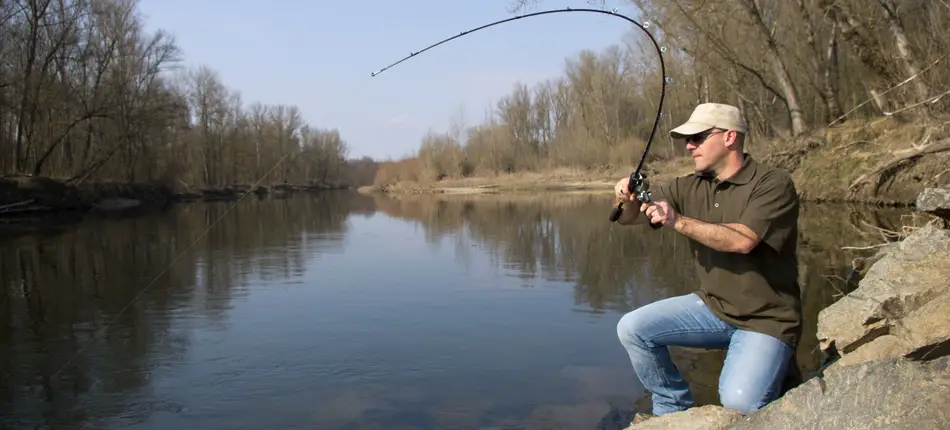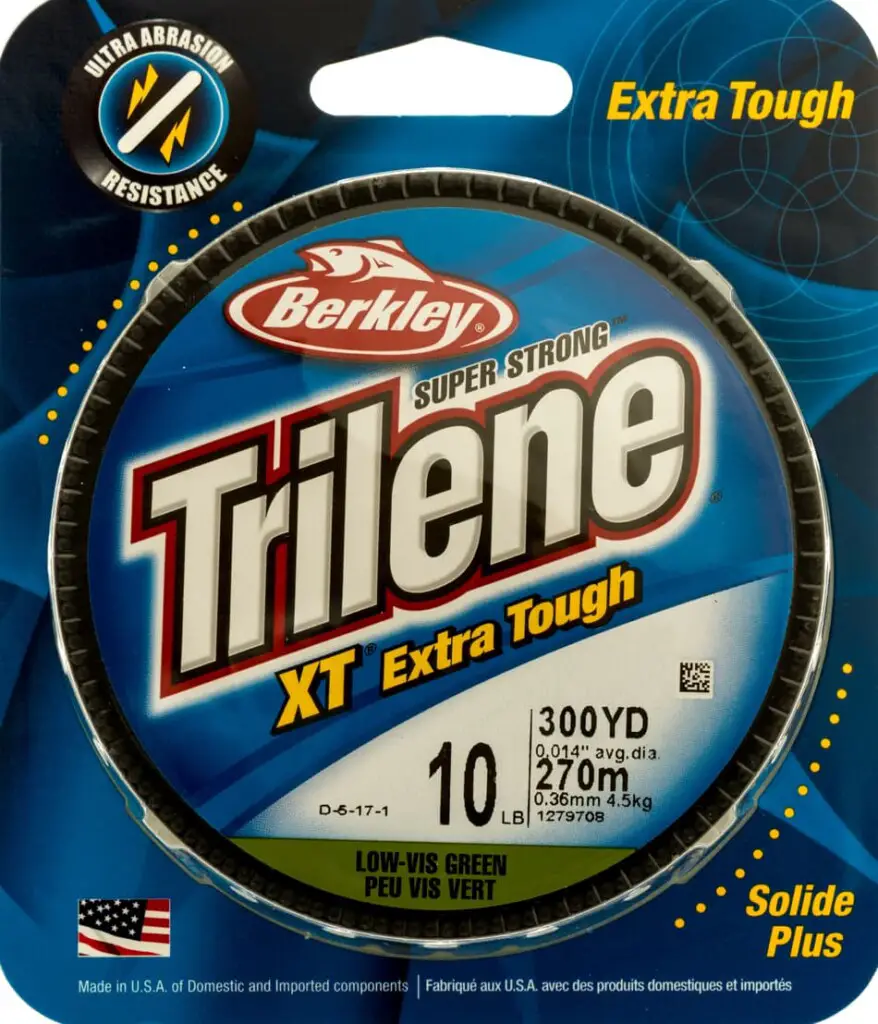
Do you fully understand what is on the packaging when buying fishing line? The package information can be misleading and does not provide all the details behind what is shown on the package. A prime example of this is how the fishing line pound test is misunderstood.
What does pound test mean for fishing line? Pound test, also known as line test, refers to the fishing line’s strength in terms of pounds. This is defined as the most weight that a particular line can hold before breaking.
For example, if a fishing line is labelled as 20 lb test then this means that the fishing can hold up to 20 lbs without breaking.
The concept of pound test or line test is relatively simple. However, when evaluating what line tests to select there is some information that you will need to know.
Beware Of Labels

Whenever you look at the labels of fishing line packaging you need to be thinking about what they are not telling you on the packaging.
Generally, in most places, it is against the law to advertise false information or put false information on the packaging. However, there are no rules regarding how realistic is that information.
You can always trust what you see on a package but never believe what you see on a package.
Let me explain myself because I understand how that can seem contradictory.
A manufacturer has to be able to prove their claims on the fishing line packaging through testing and data collected. If a package states that a fishing line has a line test of 20 lb and a customer challenges that information. Maybe because their fishing line keeps snapping at 15 lb instead of 20 lb. Then the manufacturer needs to be able to prove that their fishing line can withstand 20 lbs.
Hence, you can always trust what you see on a package.
Most manufacturers understand how to test the fishing line in order to squeeze out any bit of weight as possible from the line. However, these tests do not always translate to the real world.
The issue becomes the difference between testing fishing line in a lab vs using fishing line in the real world.
Before a manufacturer tests a fishing line they are inspecting the line to make sure the sample is free from defects and moisture. When a load is applied to the fishing line the load is generally clamped by a device and not secured by a knot. Knots are generally considered to be a weak point. A lab can be controlled to optimize the temperature and moisture content in the air.
These are some of the items that can be controlled and optimized to get a better test. If a manufacturer has a testing procedure then all tests should be conducted under the same procedure to ensure all tests are performed in the same manner.
Hence, but never believe what you see on a package.
Its All About The Wet Breaking Strength
Let’s take a step back for one moment.
Recall when I mentioned earlier that fishing line manufacturers test their lines in dry conditions?
The reason for this is because fishing line can become slightly weaker when wet when exposed to water or high moisture for a period of time.
In fact, the International Gas Fish Association (IGFA) recognizes that the information on fishing line packaging was collected in a very controlled environment. This could result in different fishing lines having sufficently different strengths when wet.
Therefore the IGFA requires competitors to submit their fishing line that will be used in the competition. The IGFA will then perform their own testing that will better represent the real world.
These tests will load the fishing line when wet. In some competitions, the lines may even have knots present to better represent the real world.
The purpose of these tests is to determine the fishing line’s wet breaking strength. Typically considered to be the actual breaking strength of the fishing line.
Line Test vs Line Class
Line Test and Line Class are two different ways to describe the overall strength of fishing line.
Fishing line with the designation of Class is tested using the test parameters that the IGFA follows. Also can be referred to as the IGFA-Class.
Therefore, the weight specified on the packaging, ex. 20 lb Class, refers to the line’s breaking strength was measured at 20 lb in wet conditions.
The class designation guarantees that the line will break at or under the specified strength.
Whereas, fishing line with the designation of Test provides no guarantee that the line will break at the specified weight.
The line could break under, at, or above the weight indicated on the packaging.
Line Strength Changes With Different Lines
Different types of fishing line, such as monofilament, fluorocarbon, braided lines, will experience different wet breaking strengths for the same line test rating.
Monofilament lines are affected the most compared to the other fishing lines regarding the wet breaking strength. These lines are known to absorb water thus causing the line to become weaker.
Nylon monofilament lines have been known to have a decrease in strength when wet between 20% to 30% compared to their dry state.
Fluorocarbon and braided lines do not absorb water. For this reason, these lines do not experience a change in their strength when wet.
However, there are a lot of considerations that need to be taken into account when selecting a fishing line type. Because a certain type of fishing line does not decrease in strength when wet does not make it better.
Fluorocarbon and braided fishing line have many different properties that could make them less desirable to use.
Tips Selecting Fishing Line For Strength
Different considerations need to be taken into account when selecting the appropriate fishing line.
Castability, line stretch, line memory, and line buoyancy are just some considerations.
Here we will look into the considerations that can affect the line strength.
Knots Reduces Line Strength: Knots can cause the fishing line to experience a reduction in strength at the knot location. The line can experience a reduction in strength by 1/3.
By selecting the proper knots for the right use can greatly minimize the impact of the knot on the line strength.
Shock Resistance: The fishing line will have some load on it when trolling or fishing in very strong currents. When a fish bite on to your bait it will result in a large force. This will be in addition to the load that the fishing line is already having due to trolling or the current. Therefore, you need to account for this when selecting your line. This is usually resolved by upsizing your line test.
Overall Fish Weight and Aggressiveness: Select a line test that exceeds the weight of the fish at the very least. If a certain fish is known to be a fighter then you might need to upsize your line.
Rule of Thumb to Select The Proper Line Test: Select a line test that is about 50% over the average weight of the fish you are fishing over. For example, if you are fishing for 20 lb fish then select a 30 lb line.
This will provide enough strength to make up for losing strength on knots and other factors.
Make sure to not select a line that has to much strength. It could cause you problems if you got snagged and having to cut the line to break free will be a waste.
